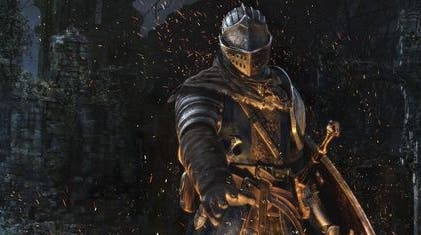Dark Souls Remastered tested on all consoles - and only one locks to 60fps
Plus full PC analysis too.
With release code in hand, we finally have a complete picture of how Dark Souls Remastered runs on consoles and PC - and while the notorious Blighttown was our first port of call for performance testing, it turns out that there are much better ways to push developer QLOC's refined version of the Dark Souls engine. The title's CPU issues are by and large resolved in the final product, but it turns out that it's the GPU that is now our primary bottleneck. All versions of the game target 60fps, though only one console gives us an absolute lock, while the PC release rights many wrongs - but is a remarkably unambitious effort overall.
Let's kick off by re-confirming the basics we established in our network test coverage. The standard Xbox One and PlayStation 4 each target 1080p, while their enhanced counterparts both strive for the same experience at a higher 1800p pixel count. For perspective, that's a 2.7x increase over both regular machines - with temporal anti-aliasing smoothing off the image and allowing for a graceful upscale for ultra HD displays. And of course, most of the HUD and text elements are a true 4K too, which duly helps with the presentation.
On the surface, it's frustrating that Xbox One X delivers the same resolution as PS4 Pro, bearing in mind the big increases in GPU compute, memory bandwidth and available RAM. Potentially, a push to a native 4K would be in-step with that leap in power - as we've seen in games like Resident Evil 7 - but 1800p is where it's fixed. In theory, a dynamic resolution could have been a much better fit here, optimising the resolution of each frame based on whether 60fps is sustainable. As it stands though, there is a performance overhead on both machines - especially Xbox One X - that isn't tapped into at points, which is a shame.
Resolution aside, Dark Souls Remastered ticks a few key boxes in visual upgrades, though there is the pervasive sense it could have been pushed further. On every console format you have a 7.5GB install (roughly double the size of the last-gen original) and the upgrade effort embellishes From Software's original 2011 work. You get revised lighting, higher-res alpha effects, animated grass textures, plus a new doorway fog effect closer in design to Dark Souls 3's. Otherwise it's much the same as before; textures are typically a pixel-match for the original 360 and PS3 release. Exceptions are there - changes to materials for example, like the knight's armour plating at the start, and the giant doors of the Undead Asylum. The player character's wizened skin also benefits a pass of subsurface scattering unseen on the original, while anisotropic filtering quality also gets a satisfying boost. But by and large, this is a standard remaster - an attempt to make the most out of existing assets.
With that said, the new lighting model makes for a big departure from the look of the original, and occasionally, some aspects do somehow look sharper in the older version of the game. On balance, the remaster does add a more logical lighting model; bonfires and bright, fog doorways now cast their own light across the environment, which just wasn't the case in 2011. It is a technical upgrade overall, but for purists, there's no question that the aesthetics have changed, and it takes a small adjustment.
As for the rest, this is a well-rounded port on all console formats. At its core, you get the same visual make-up regardless of platform, whether that's the base PS4 or Xbox One, or the enhanced machines. Beyond the resolution difference, the X and Pro models run with tweaked parameters for bloom and depth of field, to match their resolution increase. For bloom especially, this means less light bleeding around edges of geometry. The more powerful machines push sharper, less exaggerated lighting during the descent to the Firelink shrine, for example.
Ambient occlusion, texture quality, and the method of lighting are alspo replicated exactly across all systems. However, it's curious to note some obvious omissions on the enhanced consoles. As we noted in our network test coverage, PS4 Pro and Xbox One X are missing effects that render properly on the standard consoles - it's nothing too noticeable, but that eye-catching lens flare is still absent. Another unusual no-show is the moon itself on Pro and Xo, which during a boss battle with Sif, it only renders in the sky on the base consoles. The PC version has its own issues too; specifically a lack of height on some textures that are processed with parallax occlusion mapping.
These are glitches that stand as of patch 1.1 and hopefully they can be fixed. Besides this, Dark Souls is visually complete between all four consoles and PC, and none of these machines miss out. Inevitably, the question of performance follows. Given that the visual ambition of the remaster is so straightforward, presenting a last-gen game with new effects at a higher resolution, you'd hope frame-rates hold at 60fps regardless of what you're running on. And certainly, testing Blighttown on PS4 and Pro pre-patch was encouraging - showing the most demanding area hitting a locked 60fps all the way down on all systems.

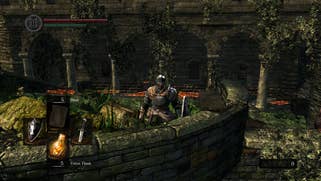


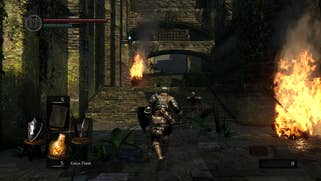

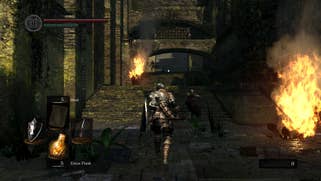
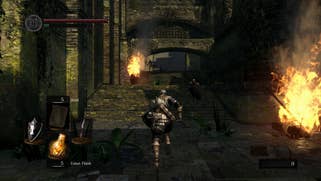








But as things turn out, this notorious stress test is not the best challenge for the revised version of the Dark Souls engine - it's no longer about CPU resources because the game's clear optimisation push is all about getting more from your processor. To put things into perspective, we examined the PC game in depth, progressively scaling down available cores on an eight-core Ryzen 7 1700. Performance drops beneath 60fps accompanied by stutter only started to intrude when just two physical cores/threads were available. This focus in optimisation is essential in hitting 60fps, bearing in mind the weak performance of the current-gen console CPUs. As a result, the emphasis shifts - now it's the GPU that causes issues, particularly with alpha transparencies effects (or with multiples of them blended) and extreme close-ups on more challenging shaders - fur especially.
So, with Blighttown fixed, the stress points are very different. While a majority of regular play is locked to 60fps, major bosses do still pose a challenge. For example, the Great Wolf Sif boss hammers these consoles hard - a segment that drops to just 27fps on Xbox One, 30fps on PS4 and 44fps on Pro. Only Xbox One X, with its surfeit of memory bandwidth, manages to make the grade, retaining its perfect 60fps lock. This is by far the most impactful stress test we could find in the game and while other bosses also cause issues to a lesser extent, the pattern in performance remains the same, and it's only Microsoft's enhanced console that offers a full-on 60fps lock without exception. Looking to the PC version, both AMD's Radeon RX 580 and Nvidia's GTX 1060 - GPUs with broadly equivalent horsepower to Xbox One X - once again deliver a locked 60fps at the same 1800p, but struggle with alpha-intensive effects at full 4K. You'll need GTX 1070 or RX Vega 56 hardware to lock at max settings at ultra HD resolution.
In terms of the quality of the PC version port, there are two ways of looking at the situation here. On the one hand, it fixes the most egregious issues that compelled modders like Durante to dip into the code of the original 'Prepare to Die' edition in an attempt to address its many shortcomings. Hitting 60fps and staying there isn't a problem on virtually any modern CPU (something that required a very fast Intel chip on the old version) and there's full resolution support, including ultra-wide compatibility. Dark Souls Remastered does the right thing here, querying Windows for the available set of supported resolutions and supplying them all to the player.
These are all good things of course but for those looking for more, there are very slim pickings here. Those with high refresh displays will find the arbitrary 60fps cap a profound disappointment - especially when there is now so much CPU overhead. Anti-aliasing tweakables are limited to two FXAA options and the consoles' temporal AA offering (which adds a touch of blur but provides the most solid option overall). Beyond that, there's the ability to enable or disable motion blur, screen-space ambient occlusion and depth of field. It's nice to have those options, but fundamentally, they're all best left enabled and the performance hit of the entire combo is minimal to say the least - we're talking just three to four per cent of GPU utilisation.
Overall, there's the sense that further GPU optimisations could have helped the base consoles lock absolutely to the target frame-rate, while the enhanced machines could have hit a native 4K - hardly too much to ask for from a last-gen remaster. And this palpable lack of ambition is much more pronounced on PC, where the lack of scalability basically means that increasing resolution is the only vector for getting the most out of more powerful hardware, so at the very least, an internal resolution scaler would have been helpful.
Still, despite the limited scope of the PC version, it is by far and away the best version of the game available for that platform - even factoring in all of the Prepare to Die Edition mods. But at the same time, it clearly doesn't go far enough: it needs more visual options to allow for higher and lower scaling, as well as the ability to push refresh rates and frame-rates beyond the 60 limit. On top of that, after putting together the PC-centric video embedded on this page, a further issue was brought to our attention - a lack of frame-skipping, meaning actual slowdown if you are running at, say, 30fps. Additionally, there's also an issue with bugged vibration support on joypad controllers, which - along with nerfed instances of parallax occlusion mapping - we hope to see fixed in an upcoming patch.
In the final analysis, Dark Souls Remastered does a good job of polishing up a truly classic game and the presentation holds up well on modern day 1080p and 4K displays - a testament to the quality of From Software's core assets. Technically it is clearly something of a barebones remaster though, but despite this, it is still a success in many ways. Let's put it this way: attempts by a third party external studio to improve the art and effects could have compromised From's original vision - and thankfully, that has definitely not happened. This is Dark Souls as it should be, liberated from the technical limitations inherent to the last-gen console and original PC versions.
